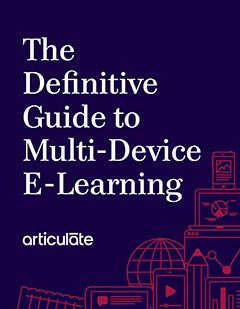Storyline 360: Content Is Slow or Doesn't Work on Apple iOS/iPadOS Devices
Article Last Updated
This article applies to:
Storyline content is supported on iPhones and iPads running the latest version of iOS/iPadOS. However, media quality and the low processing power of older device models can impact the overall performance of the content.
Older Device Models
The device model can impact mobile Safari's performance. Older device models have less memory and low processing power compared to the newer models. For example, iPhone models that were released before iPhone 12 only have up to 3 GB of memory and either an A11 or A13 bionic chip, while iPhone 12 and later have up to 6 GB of memory and a much faster A14 or A15 bionic chip. As a result, Storyline courses perform better on newer iPhones and iPads.
High-Quality Media
When you have high-quality media (e.g. audio and video), it usually means bigger file sizes. While Storyline compresses media in the best possible way so you'll get the highest possible quality at the lowest possible file size, you may still experience degraded performance when viewing high-quality content on older device models.
Recommendations
We've improved Storyline 360 to optimize how it preloads content assets on mobile devices. However, due to the limitations mentioned above, there's always a chance a learner will encounter issues with a course when using mobile Safari. We recommend testing your content, optimizing your media, and updating your software, as described below.
Test Your Content
When deploying content for iPhone/iPad viewing, it's good practice to test mobile Safari thoroughly. If your learners have different generations of iOS devices, be sure to test each model (due to the memory and processor variations noted above).
Optimize Your Media
We also recommend optimizing your media assets before importing them into Storyline to reduce file size, especially when you know that most of your learners use older device models. Instead of using raw files, you may use third-party compression tools to reduce media file sizes before importing them into Storyline. You can find free and open-source software to optimize your media assets like Handbrake for videos, Audacity for audio, and Gimp for images.
And when you publish, you can opt to further customize the quality of your content in Storyline 360. Note that higher quality values result in larger file sizes, which could mean longer download times for learners with slow internet connections. You can also limit the size of your content by including only what’s important (substance over style).
Update Your Software
While newer iPhone/iPad models provide better performance because they have more memory and faster processors, you may also be able to improve performance by asking learners to update their iOS/iPadOS software to the latest version.
Make sure your Storyline software is up-to-date in order to take advantage of all the latest enhancements and fixes. You can install Storyline 360 updates by following the steps outlined here.


